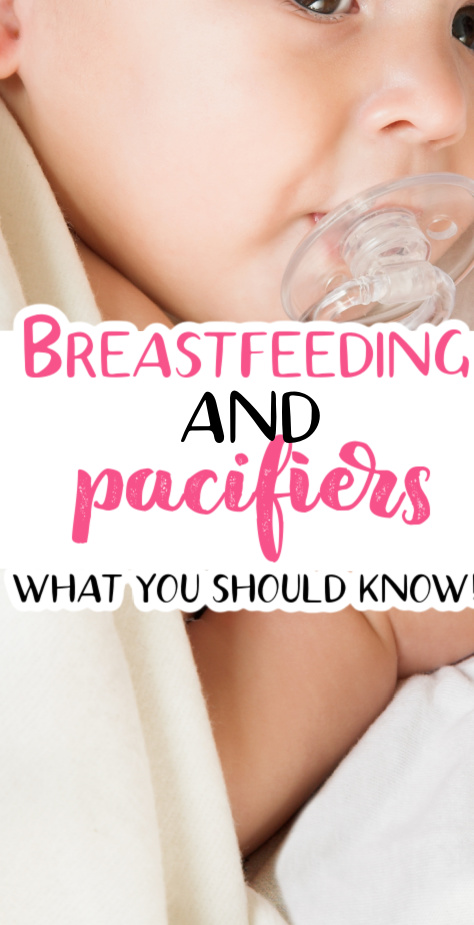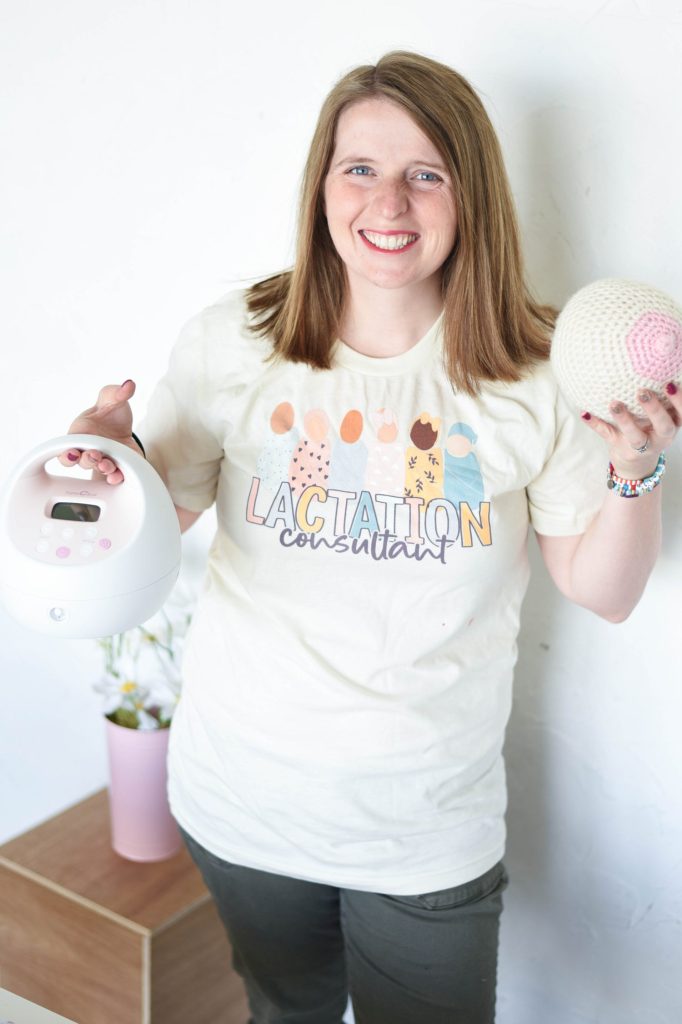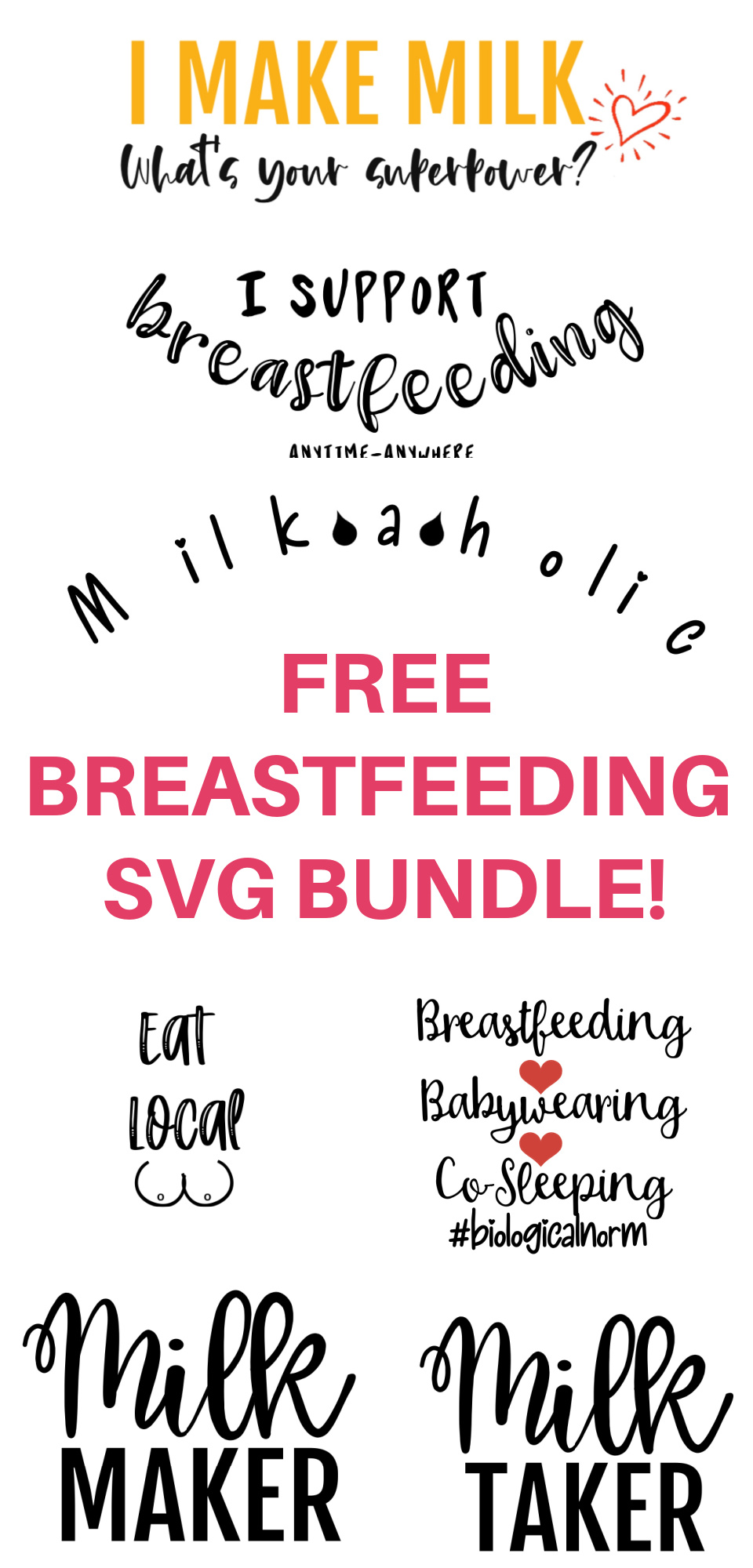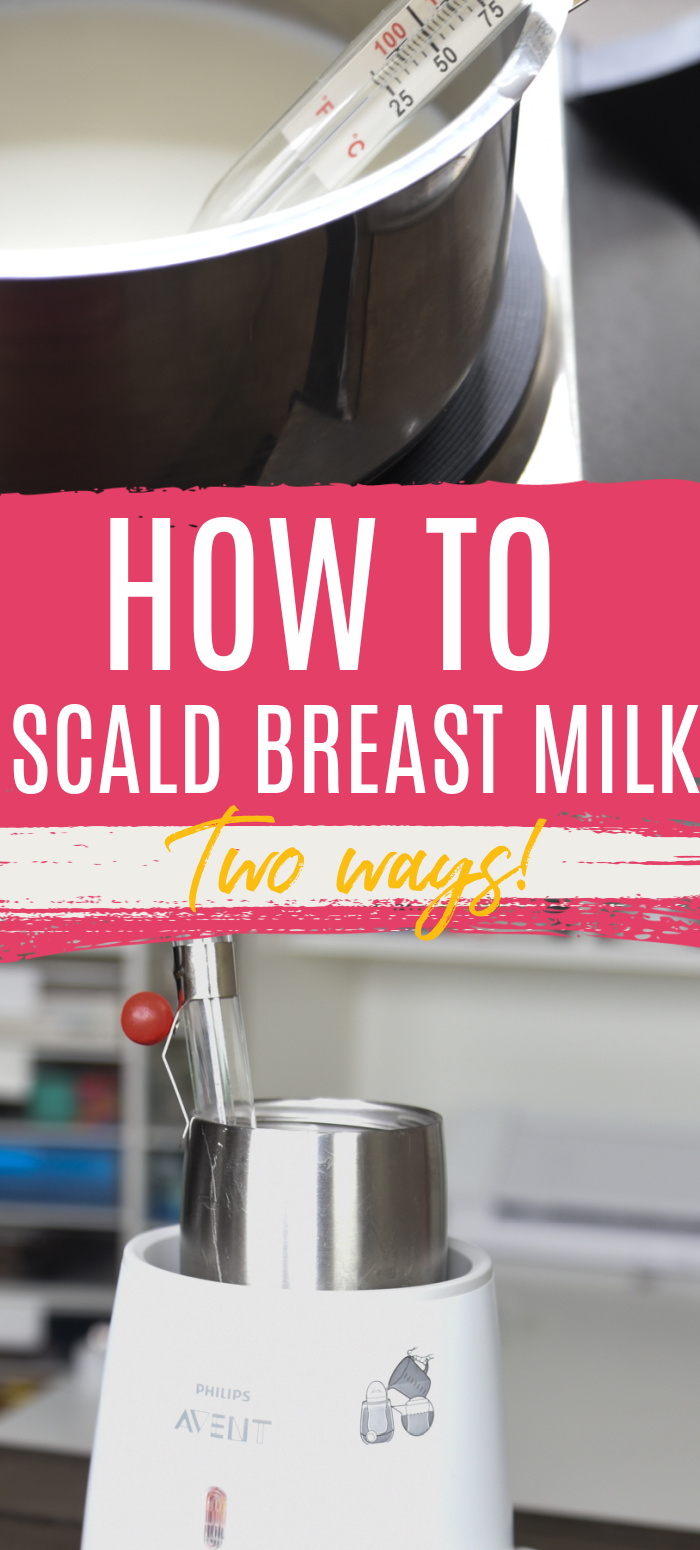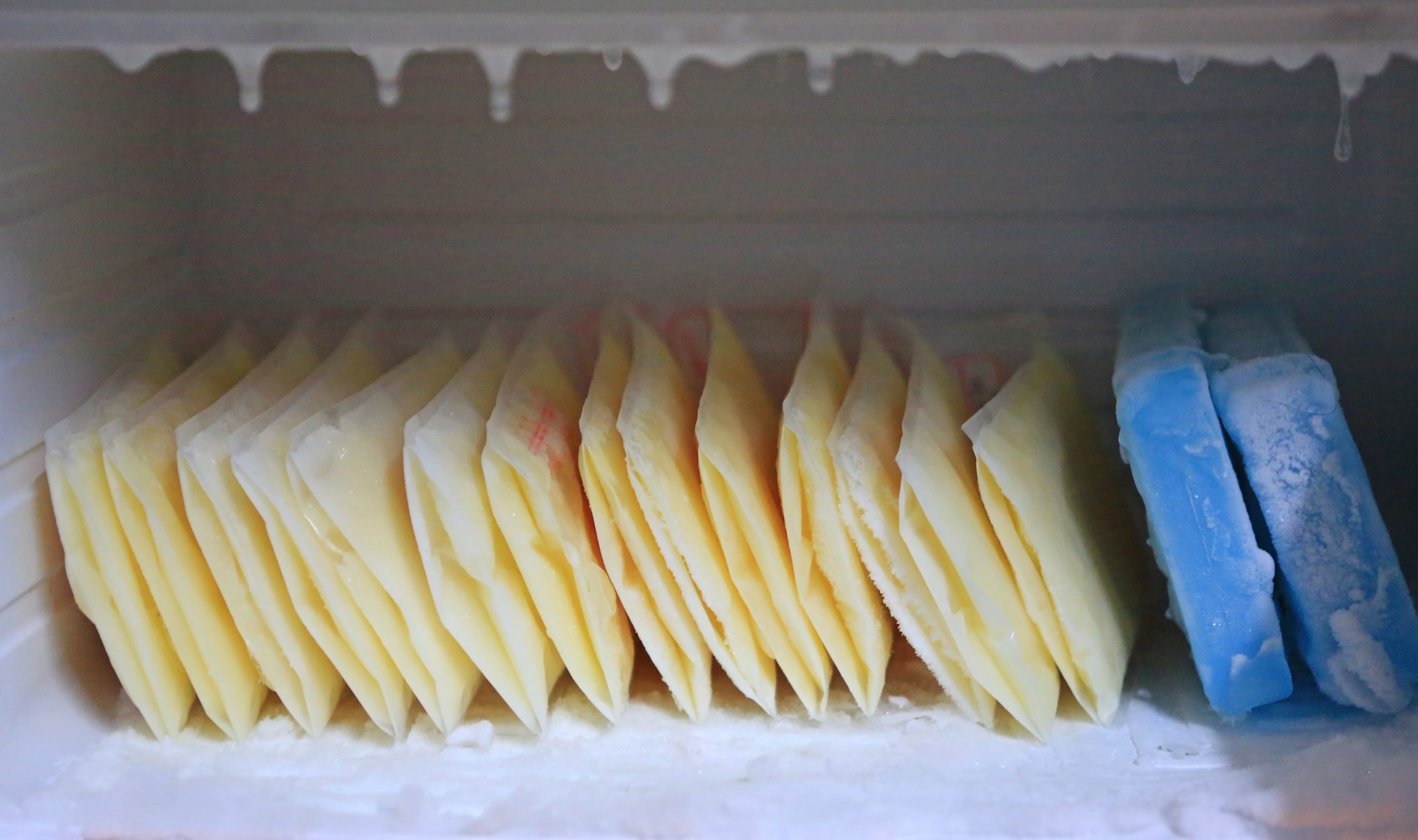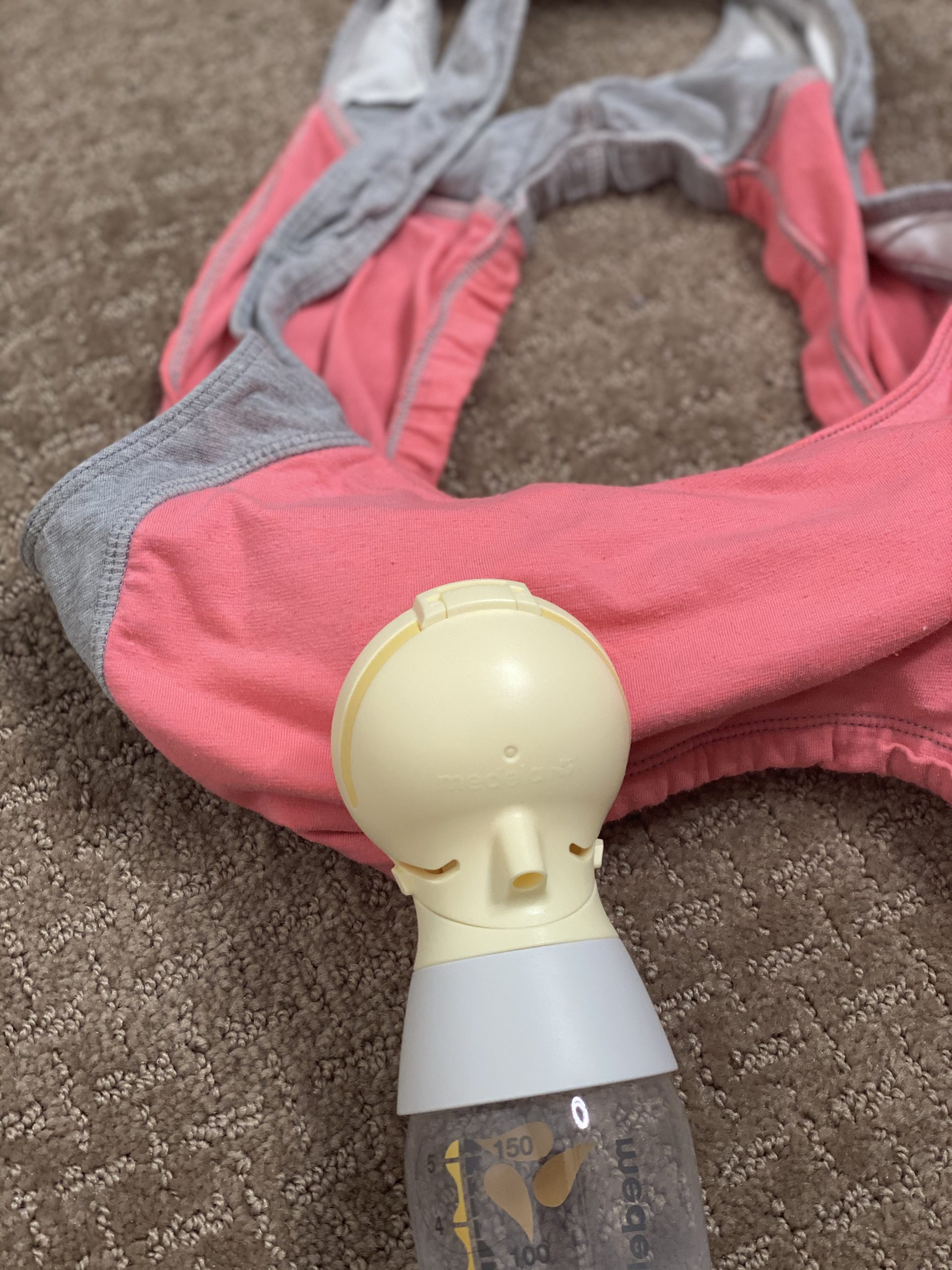Breastfeeding and pacifier use—are the two compatible? This article covers everything you should know about breastfeeding and pacifiers and whether or not you should use one.
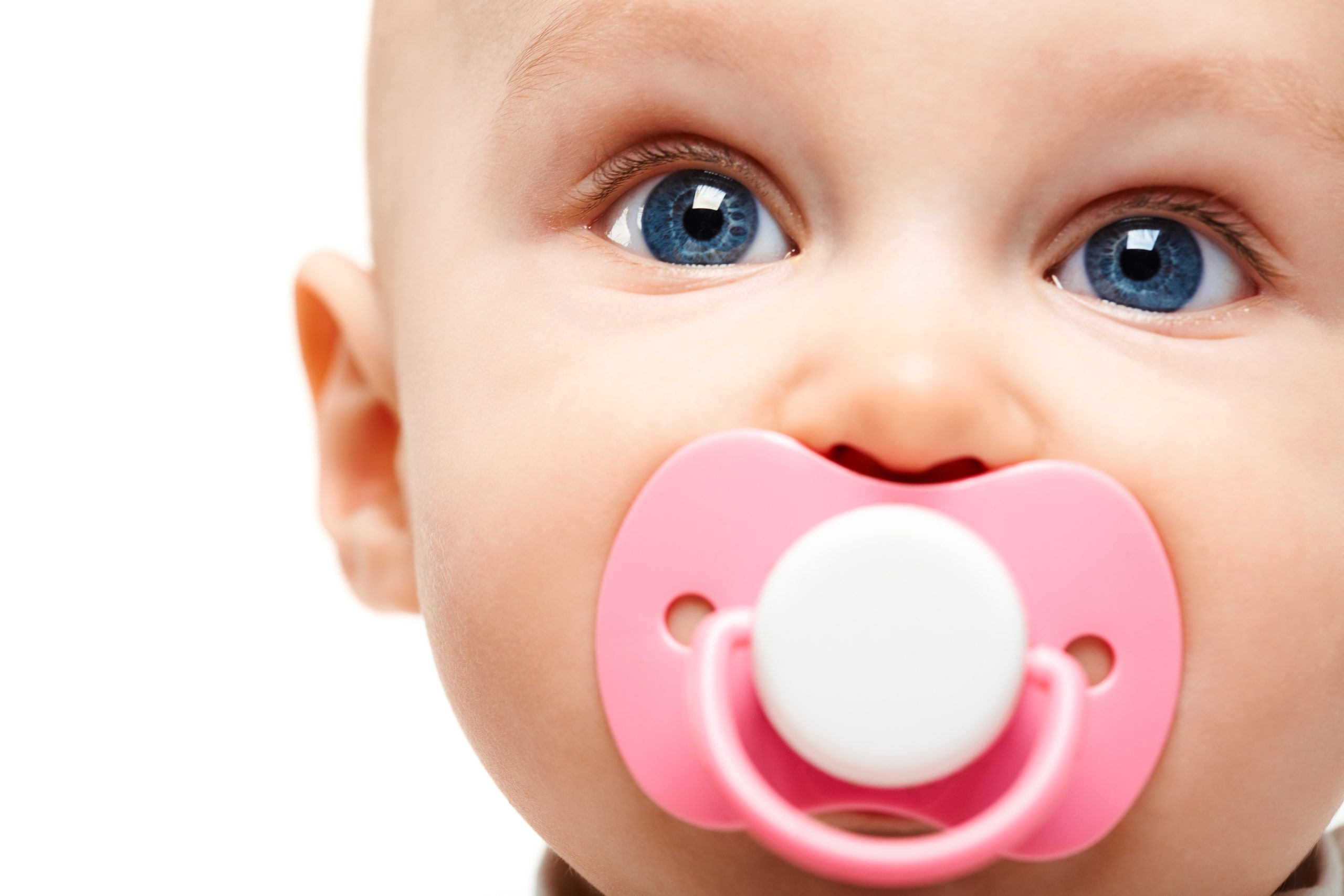
Pacifier use in infants can be controversial – especially in the lactation world.
While there are certainly benefits to pacifiers – do they outweigh the cons?
In this article, you will learn all about pacifier uses and breastfeeding – including what professionals say and tips for realistic use, along with when to introduce it, how to get your baby to take a pacifier, and more!
Pacifier Use with Breastfeeding Baby – What Professionals Say
First off, here is a little blurb from the AAP on pacifier use:
“Some people believe that using a pacifier can harm a baby. This certainly is not true. Pacifiers do not cause any medical or psychological problems. If your baby wants to suck beyond what nursing or bottle feeding provides, a pacifier will satisfy that need. However, a pacifier should not be used to replace or delay meals. It may be tempting to offer your child a pacifier when it is easy for you. But it is best to let your child decide whether, and when, to use it. Buy pacifiers that are one piece. The two-piece models can come apart and pose a choking hazard. NEVER tie a pacifier to your child’s crib, or around your child’s neck or hand. This could cause a serious strangulation injury, even death. When your child reaches one year of age, you may want to talk with your pediatrician about how – and when – to start weaning your child from the pacifier. “
Source
I feel that is sound advice and are good guidelines for anyone to follow when considering pacifier use.
It’s important to remember that a dummy is a substitute for the breast—an object to silence, or pacify a baby’s crying until the real thing is available. For this reason it doesn’t really make sense for people to suggest a baby is using his mother as a ‘human dummy’ when he wants to nurse for comfort.
There may be occasions when it’s convenient to use a dummy—to calm your baby briefly when you can’t nurse him immediately, for example if you’re driving. Sometimes a baby with colic will find it soothing to suck on a dummy between feeds.
If you decide to give your baby a dummy, it’s better to wait until breastfeeding is well-established and he is gaining weight well. You will also need to follow manufacturer’s guidelines on cleaning and replacement.
La Leche League UK
Should I use a pacifier while breastfeeding?
It’s entirely up to you! Just make sure you know the pros and cons and appropriate pacifier use, and it should be fine to use a pacifier with your breastfeeding baby.
Pros and Cons of Pacifier
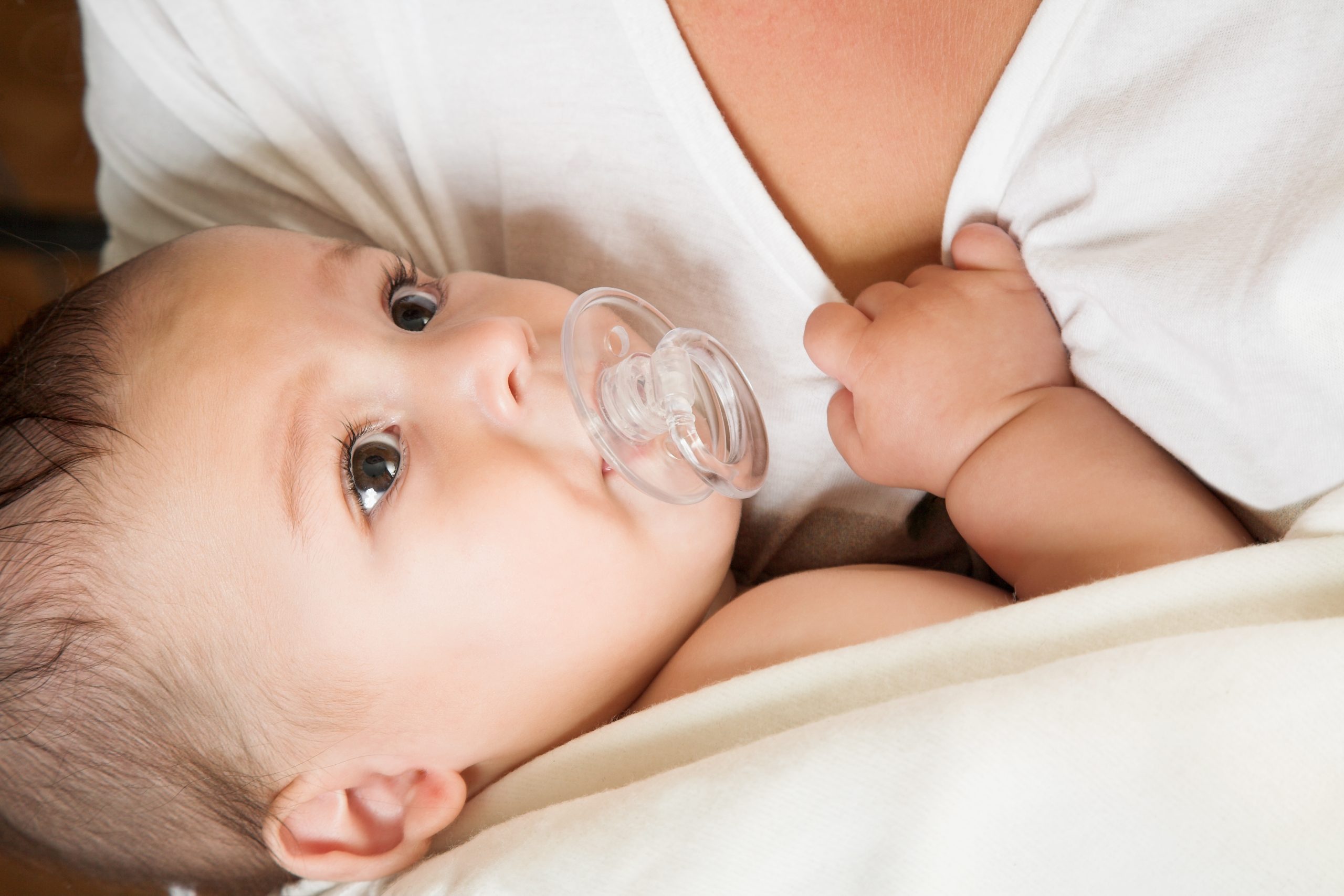
Whether or not you are breastfeeding, it’s important to be informed about the pros and cons of using a pacifier
PROS
Decreases the risk of SIDS
Studies show that pacifier uses during naps and bedtime can decrease the incidence of SIDS. The AAP does recommend all healthy, full-term infants use pacifiers during sleep.
I’m not sure why it does, but I think anything that can help prevent such a devastating event is worth using.
Can help a baby learn to suck
Some babies do need to learn how to suck, especially when they are preemies. A pacifier can be useful in assisting with that.
My IBCLC actually encouraged us to have Andrew use a pacifier occasionally to assist in some suck exercises. He had a tongue tie, and after that was revised, the pacifier helped him practice sucking.
Change in pressure
We have gone on a lot of road trips and airplanes with our kids as infants, and a change in pressure almost always bothers them.
Sucking can help to relieve that pressure and help them pop their ears. I will often nurse while we are taking off in a plane, but when we are driving through the mountains, I can’t really do that in a moving car!
When you can’t stop
Sometimes baby wants to nurse or suckle and you just can’t stop right that second. And it’s okay! A pacifier can be a temporary satiation of that need until you are able to safely stop doing something.
You can take it away
I’m fine with my kids sucking on their hands as a way to soothe themselves – and none of them have been overly attached to their hands or thumb. But I know many people who have had kids who just can’t kick the thumb sucking habit.
It’s no fun to take a pacifier away, but it’s easier than taking away a thumb (which, obviously you can’t do!).
CONS
There are cons to using pacifiers. Personally, I haven’t seen many of these myself, but I know they happen. It’s important to be informed before you make any decisions regarding your baby!
Nipple preference
Some people will refer to this as nipple confusion, but I don’t really believe that exists. Babies are smart, and they do gain preferences.
If given a pacifier all the time, they may start to gain preference for it if you aren’t careful. Just make sure you aren’t using a pacifier when the baby needs to eat!
Early weaning
There is some evidence to suggest regular pacifier use can be linked to early weaning. I could see this if baby is trained to want their pacifier for soothing rather than nursing, once they start to get more nutrition from solids, they may default to their pacifier instead of nursing.
Thrush
Because pacifiers are exposed to a lot of different bacterias, if you aren’t careful, it can lead to thrush.
Some mothers/babies are more susceptible to recurrent thrush, and sometimes that’s due to not properly sanitizing a pacifier.
Increase in Ear Infections
Various studies link regular pacifier use to recurrent ear infections.
Teeth Malalignment
Pacifier use is linked to creating issues with the development of teeth and the palate.
In some circumstances, this can also lead to speech problems.
Might Encourage the Earlier Return of Fertility
Exclusive breastfeeding can be a form of birth control, but if your baby is getting more of their sucking satisfaction from a pacifier rather than breastfeeding, it can decrease the effectiveness of this.
Attachment
I think this is the one we have experienced the most – attachment to the pacifier! Thankfully, you can take them away – but it’s certainly not without protest (at least in our situation).
Many of these issues can be avoided if you try to limit pacifier use to bed and nap time.
Additional reading you may enjoy:
- 7 Reasons Your Newborn Won’t Latch
- Proper Breastfeeding Latch: Step-by-Step Guide for Easier Latching
- 22 Low Milk Supply Causes You May Not Know About
- 8 Easy Breast Milk Recipes Your Baby Will LOVE!
- 100+ Breastfeeding Snack Ideas for New Moms
When to Introduce Pacifier to Breastfeeding Baby
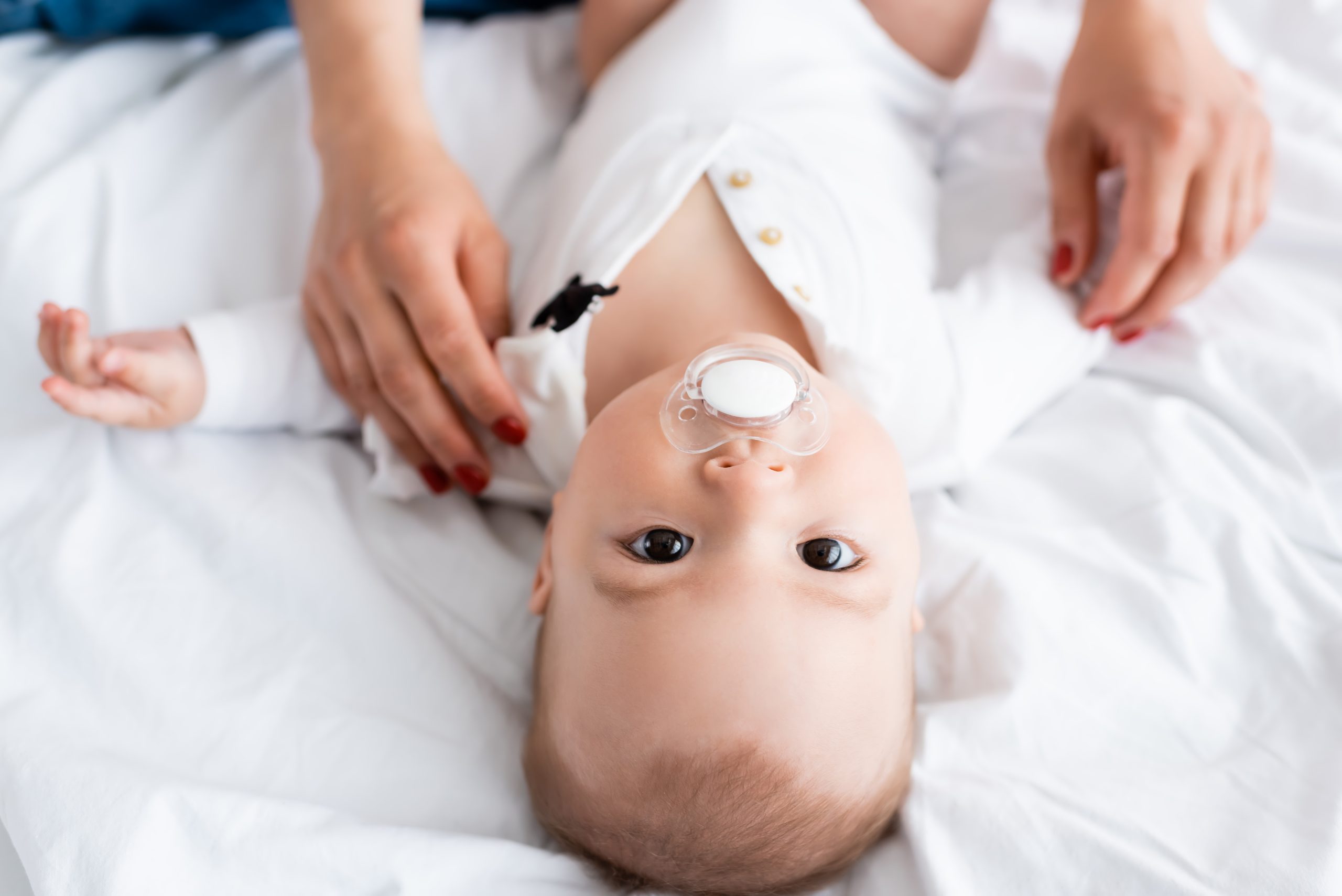
The Breastfeeding Friendly Hospital initiative suggests that babies should not be given any artificial nipple (such as a pacifier or bottle) while in the hospital.
Most breastfeeding professionals also encourage this and suggest not giving one until breastfeeding is well-established.
So when is breastfeeding well-established? That is going to look different for every mom and baby.
Kelly Mom suggests waiting until 3-4 weeks, though she said she feels it’s better to wait until six weeks, when mom’s breastfeeding supply is more regulated.
The AAP suggests that “mothers of healthy term infants should be instructed to use pacifiers at infant nap and sleep time after breastfeeding is well-established, at approximately 3 to 4 weeks of age.”
I was curious about when mothers usually introduced pacifiers, so I did a poll in my breastfeeding group. Here are the results from 164 respondents:
- 59% introduced a pacifier between birth and two weeks and experienced no issues with breastfeeding
- 18% introduced pacifiers after two weeks and baby refused it
- 14% introduced pacifier after two weeks and had no issues
- 6% never introduced a pacifier
- 3% introduced a pacifier at four weeks and had no issues
And not one person said they had breastfeeding problems after introducing a pacifier. Obviously, this isn’t a scientific study, and there could be different variables, but I found the results interesting.
More often than not, people said that when they waited for more than a couple of weeks, their baby refused a pacifier. This seemed to be a lot more common than the baby having issues with breastfeeding.
When Should You Avoid Pacifier Use?
Ideally, a pacifier will primarily be used during bedtime and naptime, which will hopefully prevent a lot of the issues I’ve mentioned above.
However, we all know that sometimes that doesn’t always happen (and that’s okay!). But there are some times you may want to consider limiting or eliminating pacifier use:
- If the baby has reduced the frequency or duration of feeds
- If the baby is having issues nursing
- Weight gain problems may be linked to baby not having enough time at the breast
- Low milk supply may be due to the baby not suckling enough.
- Repeated incidence of thrush
- Tepeated incidence ear infections
What to Look for in a Pacifier for a Breastfed Baby
Not all pacifiers are the same and not all babies will accept each one the same.
As I mentioned above – start with the one you want your baby to use. My big boys all started with the iconic Soothie ones…and then they refused any others that I tried later on.
Here are a few things to look for when selecting a pacifier:
- Made from silicone
- Ideally, select one that is just one piece (rather one that has a separate ring piece) to avoid choking hazards
- A cylindrical shape, like the Avent Soothie, is best for sucking skills.
- Pay attention to the size – most pacifiers will indicate the age range it’s intended for on the package.
Be sure to check out this post for some popular recommendations – The Best Pacifiers for a Breastfeeding Baby – Mother-Recommended Options!
Why Won’t My Baby Take a Pacifier?
It can be frustrating when you desire for your child to take to a pacifier, but they are resisting it. Here are a few reasons:
- They just don’t want it. There are some babies who will refuse any type of artificial nipple of any kind, and that’s that. Babies are individuals, and just like adults have strong preferences – some babies do, too!
- Tongue Tie – some babies can’t keep a pacifier in their mouth due to a tongue tie. Typically you will see other symptoms (such as bottler refusal, pain while nursing, etc.)
- They don’t like the shape or feel of it – sometimes it just takes some experimentation to find a pacifier your child likes. In another post I will share the best ones for breastfed babies.
How to Get My Baby to Take a Pacifier
Here are a few tips for encouraging pacifier use:
- Try a different pacifier
- Try when baby is sleepy
- Avoid attempting use when baby is hungry – right after a feed can be a great time!
- Freeze it or warm it up (not to any crazy extreme – you don’t want to hurt them!)
- Add some breast milk to the tip of the pacifier
- Stroke the pacifier on baby’s upper lip and then insert from there – gently squeezing their cheeks.
My Baby is Using Me as a Pacifier!
The breast is nature’s pacifier. I often hear mother’s saying that their baby is using their as a pacifier. I would encourage you to remember that a pacifier is meant to be a substitute for breast, not the other way around.
I totally understand how exhausting it can be when you feel like your baby is non-nutritive nursing. If you don’t like this – you certainly can find ways to change it! However, if you don’t mind and are just worried that you are somehow harming your child by allowing them to pacify at the breast – rest assured, you are not!
My “Rules” for Pacifier Use
These are some rules that I personally follow when using a pacifier – especially in the early weeks and months of my children’s life. I think that they’ve helped.
Offer the breast first
There’s a false notion that you should only breastfeed your child for hunger. The thing is – breastfeeding offers so much more to an infant than just nutrition.
Sometimes they just want to nurse, and that’s okay! So if you are in a situation where you can nurse and baby seems like they want to nurse – then let them!
I will say that Jack (my first child) was probably the most attached to his pacifier, and he’s the one that I thought I had to only feed every three hours. With Andrew, he will take a pacifier, but he much prefers nursing if I will let him. I don’t follow any particular feeding schedule with him.
There have been times where he was upset and did not want to latch for whatever reason- and a pacifier helped to calm him down to the point where he would latch again. So in those situations, I was grateful for the pacifier!
Remember that a pacifier is a breast substitute – not the other way around
I often hear mothers say “my baby is using me as a pacifier! What do I do!?”
And I always try to remind them that a pacifier was invented to be a substitute for the breast – not the other way around.
As I’ve already said, babies will want to nurse for reasons other than nutrition. And sometimes they will want to nurse close together (cluster feed) for reasons like increasing your supply, if they are going through a growth spurt, battling an illness, etc.
Cluster feeding is especially normal during the first few weeks and months, so I would encourage you to try and be patient through those times. It’s okay if you need a little break and offer a pacifier, but I would try not to think a pacifier should be the first thing you turn to if baby is wanting to nurse a lot.
Find a pacifier that baby likes…but not too much
While researching this post, I came across someone who said this – and I thought it was some good advice.
It’s good to find a pacifier that your child will take, doesn’t gag on, and seems to like. But you don’t want them to like it more than they like the breast!
Start with the pacifier you want to use
Trust me on this one – babies gain preferences fast. Jack and Oliver wouldn’t take anything but Soothie pacifiers.
But the older your kid gets, the less likely they will be to take another pacifier. So definitely start off on the right foot with the pacifier you want them to use.
Other Posts You May Enjoy
- How to Wean from Breastfeeding: Everything You Need to Know
- Breastfeeding and Introducing Solids: Everything You Need to Know
- Is Your Breastfeeding Baby Biting? Here’s What You Should Do.
- 27 Common Breastfeeding Questions – and Answers!
